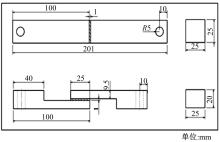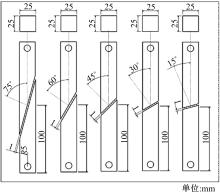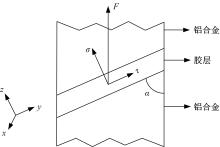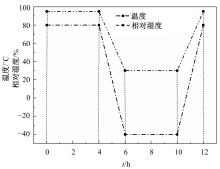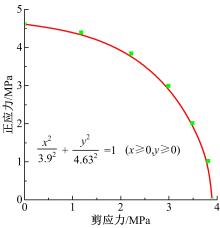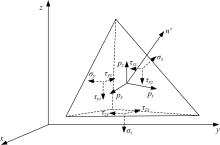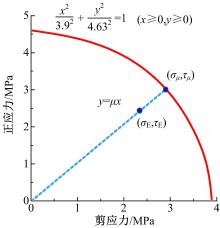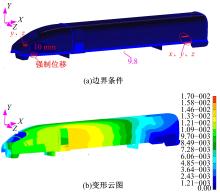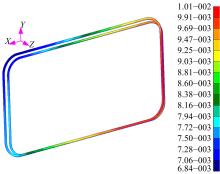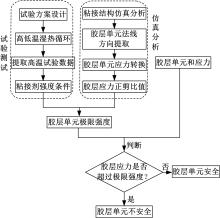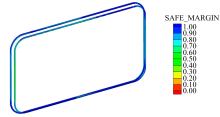吉林大学学报(工学版) ›› 2021, Vol. 51 ›› Issue (3): 840-846.doi: 10.13229/j.cnki.jdxbgxb20200109
基于剩余强度的高速动车侧窗粘接强度校核方法
- 1.华北水利水电大学 机械学院,郑州 450045
2.吉林大学 汽车仿真与控制国家重点实验室,长春 130022
Method for checking bonding strength of high⁃speed EMU side window based on residual strength
Yi-sa FAN1( ),Jing-xin NA2,Lin-jian SHANGGUAN1(
),Jing-xin NA2,Lin-jian SHANGGUAN1( )
)
- 1.School of Mechanical Engineering,North China University of Water Resources and Electric Power,Zhengzhou 450045,China
2.State Key Laboratory of Automotive Simulation and Control,Jilin University,Changchun 130022,China
摘要:
从工程应用角度出发,提出了一种基于剩余强度的高速动车组侧窗粘接结构强度校核方法,该方法采用人工加速老化试验与仿真分析相结合的方式,完成对粘接胶层的强度校核。采用执行程序完成校核结果的显示化,获得粘接胶层安全余量云图,方便设计人员参考。最后,通过实车模型验证了该强度校核方法的简单、有效性。
中图分类号:
- U266.2
| 1 | Marques E A S, da Silva L F M, Banea M D, et al. Adhesive joints for low-and high-temperature use: an overview[J]. The Journal of Adhesion, 2015,91(7):556-585. |
| 2 | Xu W, Wei Y G. Assessments for impact of adhesive properties: modeling strength of metallic single lap joints[J]. Journal of Adhesion Science and Technology, 2013, 27(1):1-21. |
| 3 | 庄蔚敏, 施宏达, 解东旋,等. 钢铝异质无铆钉粘铆复合连接胶层厚度分布[J]. 吉林大学学报:工学版, 2020, 50(1):100-106. |
| Zhuang Wei-min,Shi Hong-da,Xie Dong-xuan, et al. Thickness distribution of adhesive layer in dissimilar clinch-adhesive hybrid joint with steel and aluminum alloy[J]. Journal of Jilin University(Engineering and Technology Edition), 2020, 50(1):100-106. | |
| 4 | Kinloch A J. Toughening epoxy adhesives to meet today's challenges[J]. Mrs Bulletin, 2003, 28(6): 445-448. |
| 5 | Banea M D, da Silva L F M, Campilho R. Moulds design for adhesive bulk and joint specimens manufacturing[J]. Assembly Automation, 2012, 32(3):284-292. |
| 6 | 那景新, 刘浩垒, 范以撒, 等. 湿热环境对车用粘接剂拉伸强度的影响[J]. 吉林大学学报:工学版, 2019, 49(3):822-828. |
| Na Jing-xin,Liu Hao-lei,Fan Yi-sa, et al. Effect of hygrothermal environment on vehicle adhesive tensile strength[J]. Journal of Jilin University(Engineering and Technology Edition), 2019, 49(3):822-828. | |
| 7 | Spiryagin M, Lee K S, Yoo H H, al et, Modeling of adhesion for railway vehicles[J]. Journal of Adhesive Science and Technology, 2008, 22(10):1017-1034. |
| 8 | Grant L D R, Adams R D, Silva L F M D. Effect of the temperature on the strength of adhesively bonded single lap and T joints for the automotive industry[J]. International Journal of Adhesion and Adhesives, 2009, 29(5):535-542. |
| 9 | He X, Gu F, Ball A. Fatigue behaviour of fastening joints of sheet materials and finite element analysis[J]. Advances in Mechanical Engineering, 2013, 2013(3):533-542. |
| 10 | Pulung N I, Arief B B, Muhammad A. Evaluation of bonding strength and fracture criterion for aluminum alloy-woven composite adhesive joint based on cohesive zone model[J]. International Journal of Adhesion and Adhesives, 2018, 85:193-201. |
| 11 | Hart-Smith L J. Adhesive-bonded single-lap joints[EB/OL]. [2020-02-02]. |
| 12 | Adams R D, Comyn J, Wake W C. Structural Adhesive Joints in Engineering[M]. Amsterdam: Elsevier Applied Science Publishers, 1997. |
| 13 | Adams R D, Harris J A. The influence of local geometry on the strength of adhesive joints[J]. International Journal of Adhesion and Adhesives, 1987, 7(2):69-80. |
| 14 | Alfano M, Furgiuele F, Leonardi A, et al. Mode I fracture of adhesive joints using tailored cohesive zone models[J]. International Journal of Fracture, 2009, 157(1):193-204. |
| 15 | Qiao Pi-zhong, Chen Ying. Cohesive fracture simulation and failure modes of FRP-concrete bonded interfaces[J]. Theoretical and Applied Fracture Mechanics, 2008, 49(2):213-225. |
| 16 | Feraren P, Jensen H M. Cohesive zone modelling of interface fracture near flaws in adhesive joints[J]. Engineering Fracture Mechanics, 2004, 71(15):2125-2142. |
| 17 | Moura M F S F D, Gonçalves J P M, Chousal J A G, et al. Cohesive and continuum mixed-mode damage models applied to the simulation of the mechanical behaviour of bonded joints[J]. International Journal of Adhesion and Adhesives, 2008, 28(8):419-426. |
| 18 | Abdel W M M, Ashcroft I A, Crocombe A D, et al. Prediction of fatigue thresholds in adhesively bonded joints using damage mechanics and fracture mechanics[J]. Journal of Adhesion Science and Technology, 2001, 15(7):763-781. |
| 19 | Abdel W M M, Hilmy I, Ashcroft I A, et al. Evaluation of fatigue damage in adhesive bonding: part 1: bulk adhesive[J]. Journal of Adhesion Science and Technology, 2010, 24(2):305-324. |
| 20 | Martiny P, Lani F, Kinloch A J, et al. A multiscale parametric study of mode I fracture in metal-to-metal low-toughness adhesive joints[J]. International Journal of Fracture, 2012, 173(2):105-133. |
| 21 | Weißgraeber P, Becker W. Finite fracture mechanics model for mixed mode fracture in adhesive joints[J]. International Journal of Solids and Structures, 2013, 50(14/15):2383-2394. |
| 22 | Hutchinson J W, Suo Z. Mixed mode cracking in layered materials[J]. Advances in Applied Mechanics, 1992, 29(8):63-191. |
| 23 | Wang C H, Rose L R F. Compact solutions for the corner singularity in bonded lap joints[J]. International Journal of Adhesion and Adhesives, 2000, 20(2):145-154. |
| 24 | Na J X, Liu Y, Cai L, et al. An adhesive joint strength evaluation method and its application in mechanical engineering[J]. Journal of Adhesive Science and Technology, 2015, 30(2):131-144. |
| 25 | . Ahesive bonding of railway vehicles and parts—part 2: qualification of manufacturer of adhesive bonded materials, quality assurance[S]. |
| 26 | Wang C H, Rose L R F. Compact solutions for the corner singularity in bonded lap joints[J]. International Journal of Adhesion and Adhesives, 2000, 20(20):145-154. |
| 27 | . 轨道车辆及部件的粘接[S]. |
| 28 | Na J X, Liu Y, Fan Y S, et al. Effect of temperature on the joint strength of a silyl modified polymer based adhesive[J]. The Journal of Adhesion, 2017,93(8): 626-639. |
| [1] | 慕文龙,那景新,谭伟,王广彬,申浩,栾建泽. 基于FTIR分析的CFRP-铝合金粘接接头剩余强度预测[J]. 吉林大学学报(工学版), 2021, 51(1): 139-146. |
|
||
